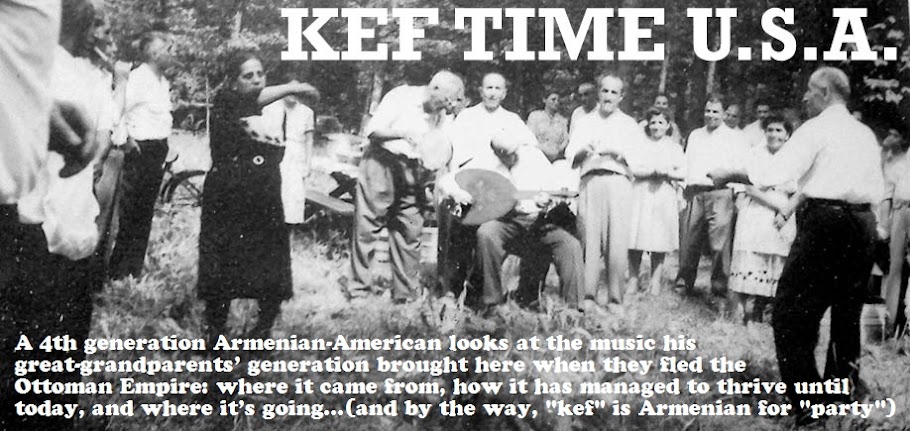That's the voice of Garbis Bakirgian, better known as Kanuni Garbis. I know, to many of you this will sound like "middle eastern wailing." But listen to the voice. His pitch is impeccable and his dynamics and the sustain of his voice are too. It's just that the music he performs isn't everybody's cup of tea. It's what we kef music fans call "heavy." This isn't the usual Armenian dance music heard at parties - it's listening music, the type of thing you would hear in a coffeehouse, and usually sung in Turkish. In the old days, Armenian coffeehouses were common in the US. In the 1920s on South Solvay Street ("Armenian Boulevard") in Delray, Detroit, there were at least 10. These were places where men gathered to talk and argue, often about Armenian politics. "Incidentally" (as Saroyan wrote) they also played tavloo (backgammon), cards, smoked, and of course, drank Turkish coffee. Saroyan humorously claimed that the coffeehouse was invented so the men could get away from their wives, and there's probably some truth to that statement. Women never entered the establishments.
Anyway, Garbis was a well known player of the kanun, a singer, and often worked with oudist and singer Marko Melkon. (A kanun is an instrument similar to the zither, see here: http://en.wikipedia.org/wiki/Qanun_%28instrument%29) Garbis and Melkon were very big in the kef scene but I haven't posted much of them because most of it is available on CD. Here the oud is played by Marko Melkon and the violin by Nick Doneff. Lyrics (Turkish): "They said [to me] don't love a sweetheart, you'll become her enemy, and you'll become an enemy to your friends too"
 |
| KANUNI GARBIS SARGAVAK BAKIRGIAN |
Garbis was born in Turkey in 1885 and was a well known musician in Istanbul who also toured the Mideast with his band. Garbis was known for his voice and his knowledge of Eastern music theory (makams) even more so than for playing the kanun. He played at the court of Sultan Abdul Hamid (otherwise known for massacring thousands of Armenians in 1894-95), and because of his voice was ordained a deacon in the Armenian Church to serve as soloist for the legendary Armenian Patriarch of Constantinople Maghakia Ormanian. In 1922 (the same year Ataturk succeeded in taking over Turkey), Garbis immigrated to the U.S. Garbis played in NYC until health reasons forced him to seek the warmer climate of Fresno, California, in 1949. In 1950 Richard Hagopian, still a kid, began taking lessons from him, on the advice of Oudi Hrant. (Richard got his unique singing style from Garbis.) Garbis died in 1969 and is buried with his wife Takouhie in...suprise, suprise...Glendale, California.
In case you were wondering, this is the type of music you are supposed to listen to when smoking a nargileh (hookah). Not pop or house or techno.

